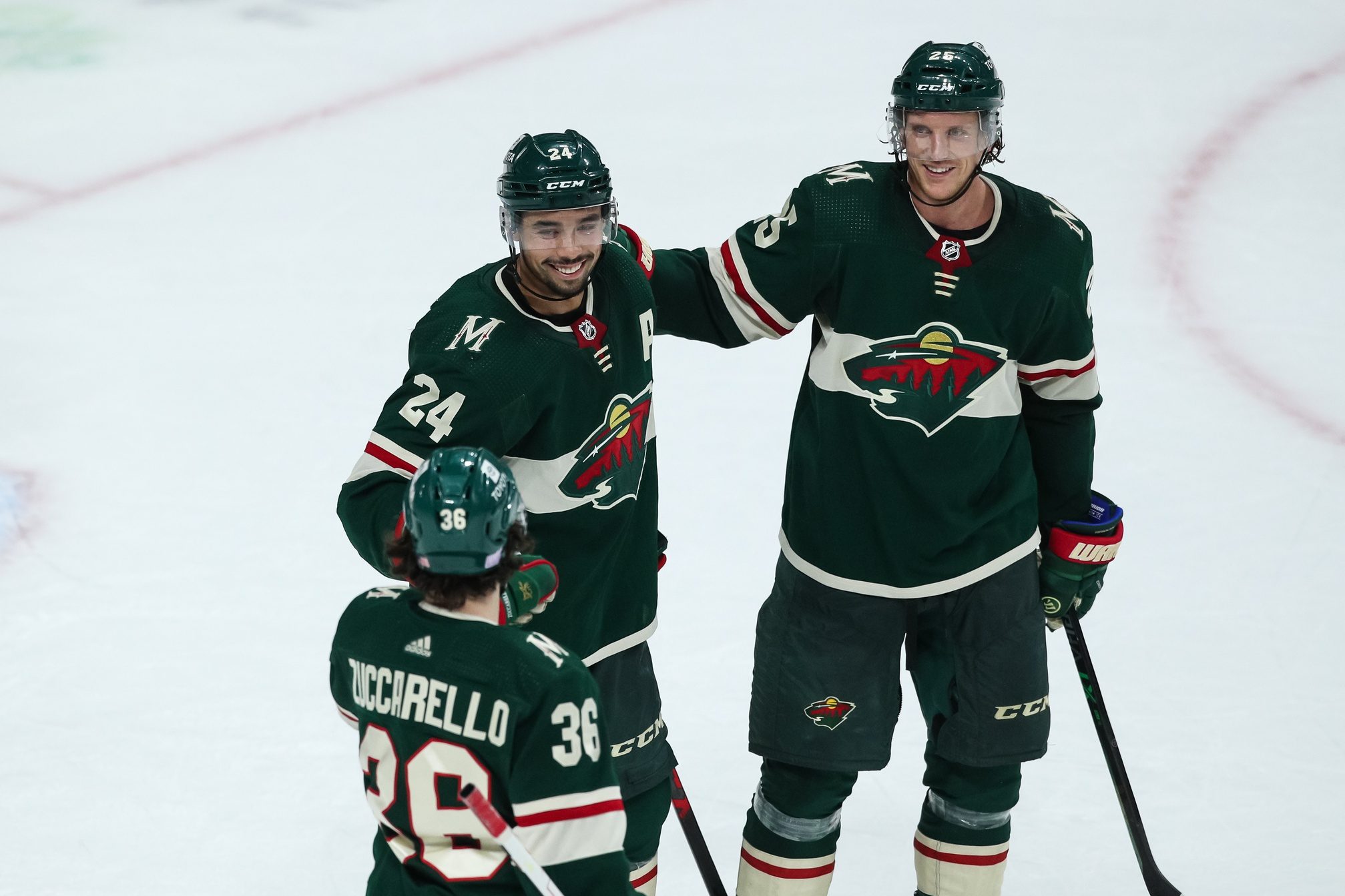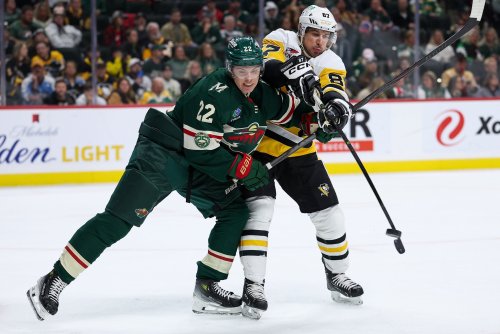
The Minnesota Wild capped off an exciting 5-4 come-from-behind win over the Pittsburgh Penguins on Saturday. It was Minnesota’s fourth game this season that required overtime or a shootout. The Wild have historically had trouble securing the all-important second point in extra time. However, they have flipped the script the last two seasons to turn a weakness into a dominating strength.
The NHL implemented the current 3-on-3 format for overtime in the 2015-16 season. By then, fans and teams had grown tired of games ending in a shootout. Teams competed for 60 minutes, plus a five-minute 4-on-4 overtime period, only to have games decided by what amounted to a skills competition. By reducing the number of skaters on the ice from four to three, the extra space allowed skilled players to make plays and score goals.
And it delivered. 3-on-3 offered everything people loved about hockey, but with more of the adrenaline-pumping moments. Unless you were a fan of the Wild, that is. 3-on-3 requires speed and skill. However, from Mike Yeo to Bruce Boudreau, Minnesota’s head coaches routinely trotted out guys like Mikko Koivu, Zach Parise, and Ryan Suter. While they were core players at the time, none of them were fleet of foot. Nor were they the difference-makers they thought they were during overtime.
From 2015 to Boudreau’s dismissal in February of 2020, the Wild went 25-46 in 3-on-3 OT. Yeo, John Torchetti, and Boudreau combined for a .352 win percentage. That’s 46 extra points in the standings the Wild failed to secure over that timespan.
| Season | OT/SO Record |
| 2015-16 | 4-11 |
| 2016-17 | 7-8 |
| 2017-18 | 7-11 |
| 2018-19 | 4-9 |
| 2019-20 | 5-7 (3-7 Under Boudreau) |
| 2020-21 | 8-5 |
| 2021-22* | 4-0 |
* Current Season (as of 11/8/2021)
Things have changed drastically since Dean Evason took over the Wild bench. He not only rattled off two overtime wins after the Wild fired Boudreau, but those points helped the Wild into the Edmonton bubble when the NHL returned to play after the March 2020 shutdown. Since then, Evason’s Wild has rattled off a 14-5 record in games that went to overtime or a shootout for a .737 winning percentage. That kind of jump is staggering.
A lot of it comes down to the talent available, but even more so, a coach willing to deploy it. Before Evason took over, the players who received the most 3-on-3 minutes were Ryan Suter, Mikael Granlund, Jared Spurgeon, Eric Staal, Mikko Koivu, Zach Parise, and Jonas Brodin
And this was when the Wild had speedsters like Erik Haula, Jason Zucker, and Game 7 overtime hero Nino Niederreiter on the roster.
Things changed overnight after the Wild dismissed Boudreau. Parise and Suter were no longer getting those top minutes. Instead, they went to Kevin Fiala and Brodin, the two most mobile players on the team. Spurgeon, Joel Eriksson Ek, and Mats Zuccarello also picked up added minutes. To be fair, the personnel had undergone an overhaul by the time Evason took over. But instead of pulling on the reins, Evason gave his best horse, Fiala, the bit and let him run.
Add Kirill Kaprizov and Matt Dumba to the mix, and the Wild have found a recipe for success. The Wild now utilize speed and skill to win games. Furthermore, Evason isn’t afraid to repeatedly deploy those players to secure the win.
However, to run-and-gun like the Wild now do, Minnesota needs to have a goaltender in net capable of making big saves. Devan Dubnyk got the call most often during the first few years of 3-on-3 overtime. The Wild would work tirelessly to obtain and maintain puck possession, then create scoring chances. However, when the opposing goalie made a save, the puck would come back the other way and end up in the back of Minnesota's net.
Overtime is when the Wild need their goaltender the most. Dubnyk didn’t do much to help Minnesota’s cause. He gave up 16 goals on 11 expected goals. In fact, between Dubnyk, Darcy Kuemper, and Alex Stalock, the Wild goaltenders combined for a .770 save percentage in 3-on-3 overtime, surrendering 12 more goals than expected, per Evolving-Hockey’s model. Too often, the Wild got the first scoring chance in overtime only to see the other team get one chance and end the game.
Compare that with what Cam Talbot and Kaapo Kahkonen are providing these days. They’ve combined for an .833 save percentage while only giving up one goal more than expected. Sure, it's a small sample — Dubnyk played in 45 3-on-3 overtime periods, and Talbot has only been in 14 with Minnesota. The contrast is stark, nonetheless. Being set up for success and knowing one mistake won't sink them gives this team the confidence to go out and create in overtime. It just took having the right personnel on the ice to make it all happen.
If this was the Wild of old, it might be a cause for concern that they’ve had to use overtime to win games. If it was the team of a few seasons ago, the current 4-0 streak might be considered a fluke. For the longest time, the Wild looked as if they were stuck in an archaic version of the NHL. Now they’ve quickly upgraded to the modern game and did so overnight. If there’s one thing Evason should be commended for, it’s making sure the Wild aren’t losing unnecessary points in the standings because of bad decisions in the extra frame.
Think you could write a story like this? Hockey Wilderness wants you to develop your voice, find an audience, and we'll pay you to do it. Just fill out this form.







Recommended Comments
There are no comments to display.
Join the conversation
You can post now and register later. If you have an account, sign in now to post with your account.
Note: Your post will require moderator approval before it will be visible.